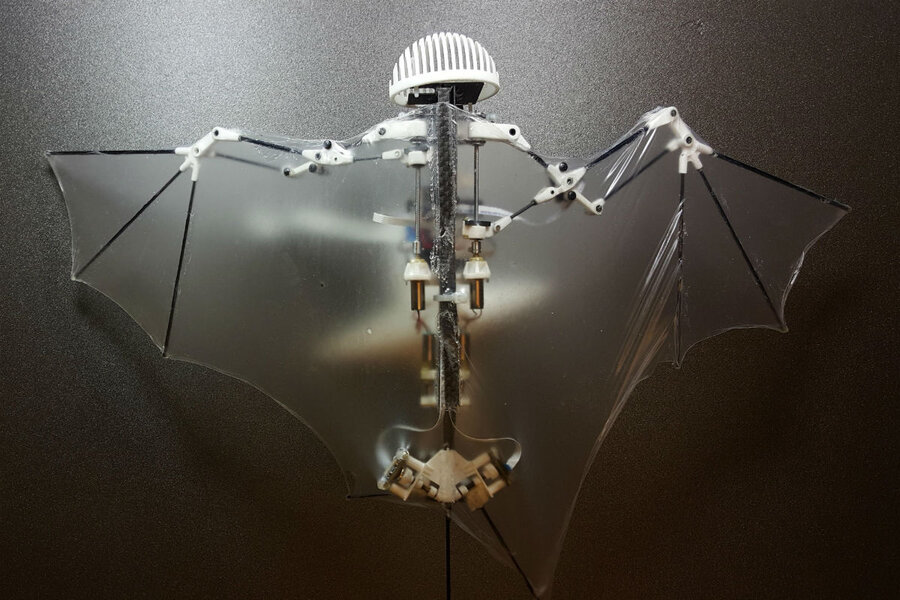This 'Bat-bot' drone makes the Batmobile look obsolete
Loading...
The dark knight could be getting a gear upgrade, thanks to a three-person robotics team.
Anyone who’s seen bats wheeling and swooping at dusk as they hunt for insects knows their unparalleled maneuverability. This fact hasn’t escaped the notice of roboticists, who frequently take inspiration from natural sources, but bat-wing complexity has proved challenging to mimic. On Wednesday, a team from the University of Illinois at Urbana-Champaign and the California Institute of Technology published a paper outlining the construction of one of the most bat-like flying robots yet.
Bats put birds to shame in terms of agility and efficiency, say the researchers. “Arguably, bats have the most sophisticated powered flight mechanism among animals,” the team wrote in their paper, published in Science Robotics. “Wing flexibility and complex wing kinematics are crucial to the unrivaled agility of bat flight."
While bird wings bend in two or three places like human arms, bat wings are more like hands, explained Brown University professor of evolutionary biology Sharon Swartz to LiveScience in 2007.
"Every joint in the human hand is there in the bat’s wing and actually a couple more,” she said. “Think about the degree of control that we have over the shape of our hands – bats are able to extend that to make fine scale adjustments during flight.”
But while 40-odd wing joints might be great news for the furry hunters, it’s a nightmare for roboticists trying to emulate the design. To keep things simple, the research team reduced their robot’s wings to only 9 joints, a process they compare to other robotics groups building bipedal machines with “point feet.”
The result was a 3.3 ounce bat-bot with independently flapping wings capable of almost 100 feet of flight in a straight line, as well as sharp maneuvers such as banking and diving. In addition to the bot’s unprecedented control over wing shape, it also features a nature-inspired stretchiness. Unlike the rigid wings and propellers of other flying machines, bat-bot wings are made of an elastic silicone-based membrane just over one-twentieth of a millimeter thick.
It’s not quite ready for prime time, though. Delicate electronics are too fragile for outdoor flight, and the tiny on-board battery can’t provide power for long distance hauls.
The bat-bot isn’t the only flying machine copping blueprints from Mother Nature. A number of designs including robotic insects and even seagulls are taking off as well. The new flight mechanisms promise more efficient and more maneuverable devices than those on the market today.
Meanwhile, consumer drones continue to plummet both in size and price. While regulators grapple with privacy and safety concerns, innovators are hard-pressed to name a field that couldn’t be transformed by personal, autonomous flying machines. Drone delivery research is underway in Massachusetts, for example, and Japan is testing drones in the logging industry to hang guidewires from tall, inaccessible trees.
A Stanford team foresees applications in search and rescue after an earthquake. They aim to circumvent battery limitations by letting their bot perch on walls and windows to rest and observe, rather than hovering until it runs out of juice.
The most recent study suggests similar uses for its bat-bot, since as any homeowner can tell you, there’s nowhere bats can’t go. Other advantages over modern quadrocopter drones also include a lack of a startling buzzing sound from the propellers, which could be useful for wildlife observation, as CNET points out.
But for these scientists, the greatest new feature might be the bat-bot’s safety-first construction.
"[T]he safety of bat-inspired robots with soft wings is the most important advantage," they wrote in the paper, contrasting it with current drones' rotor blades and propellers.








